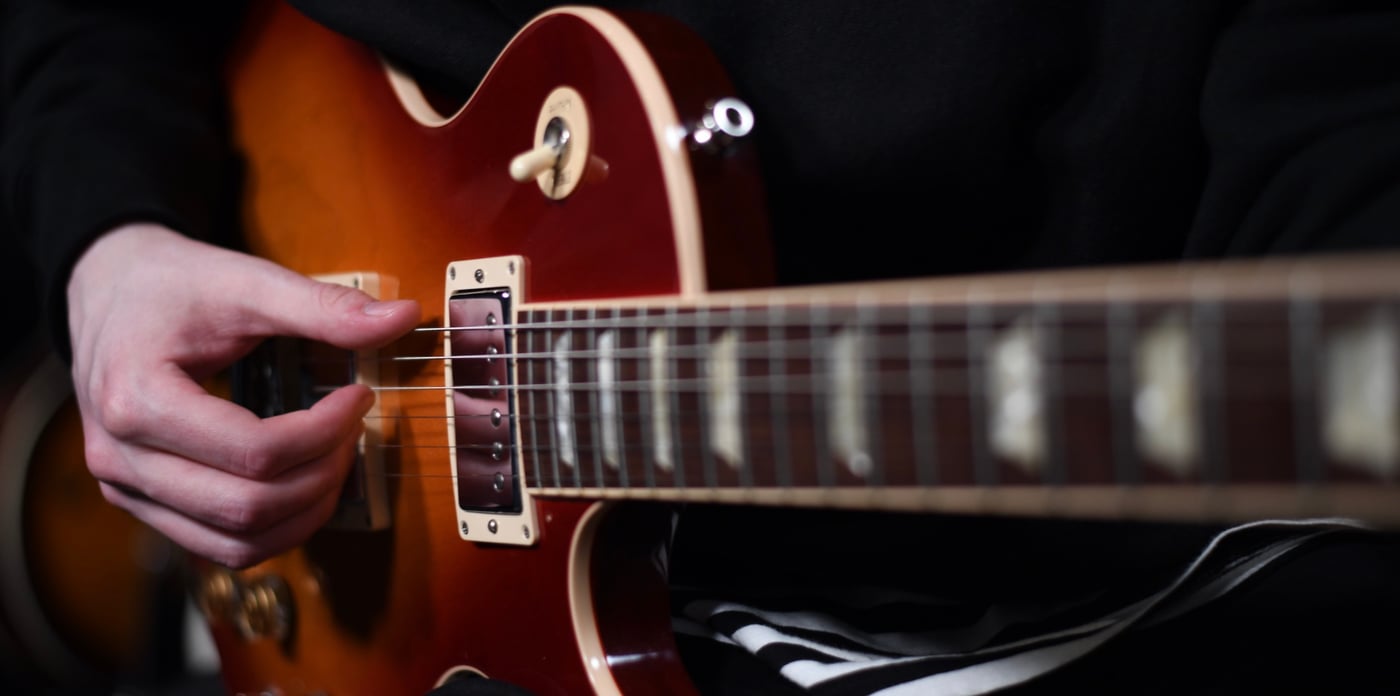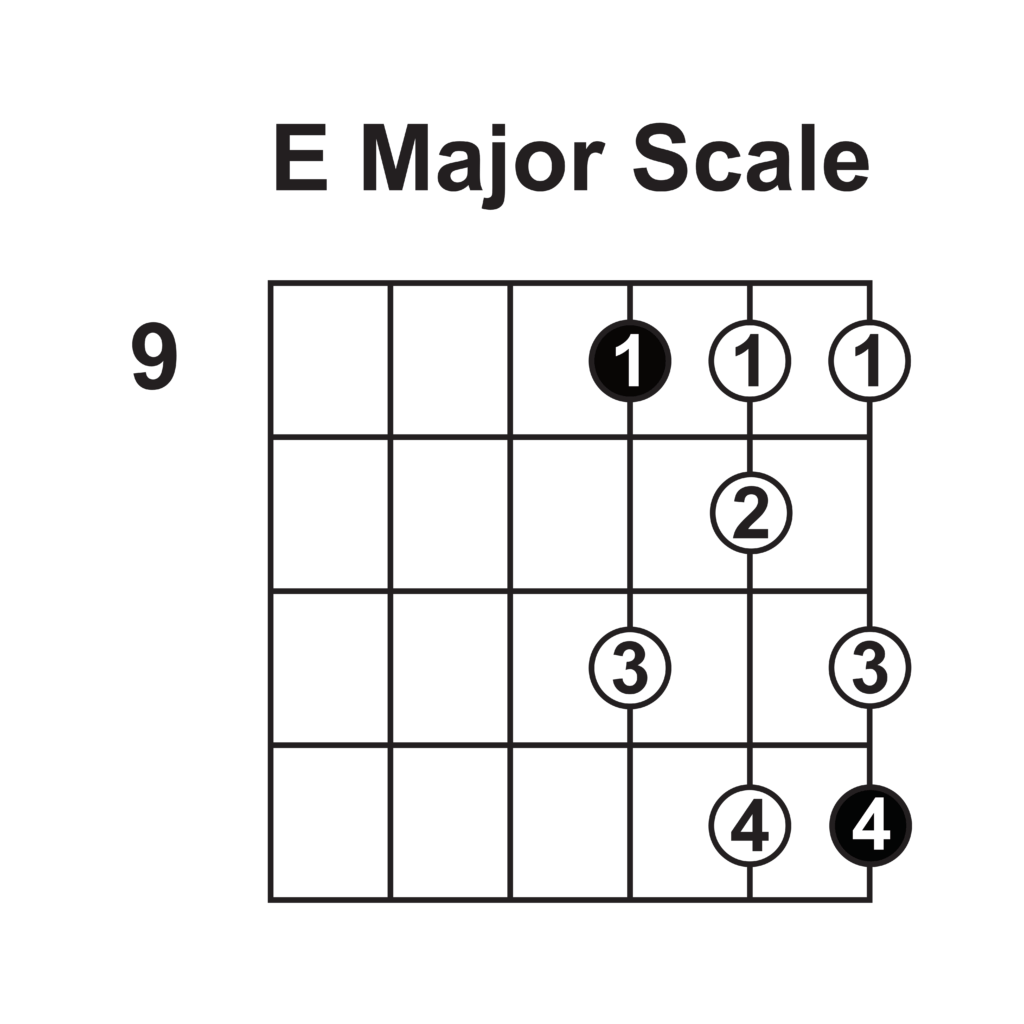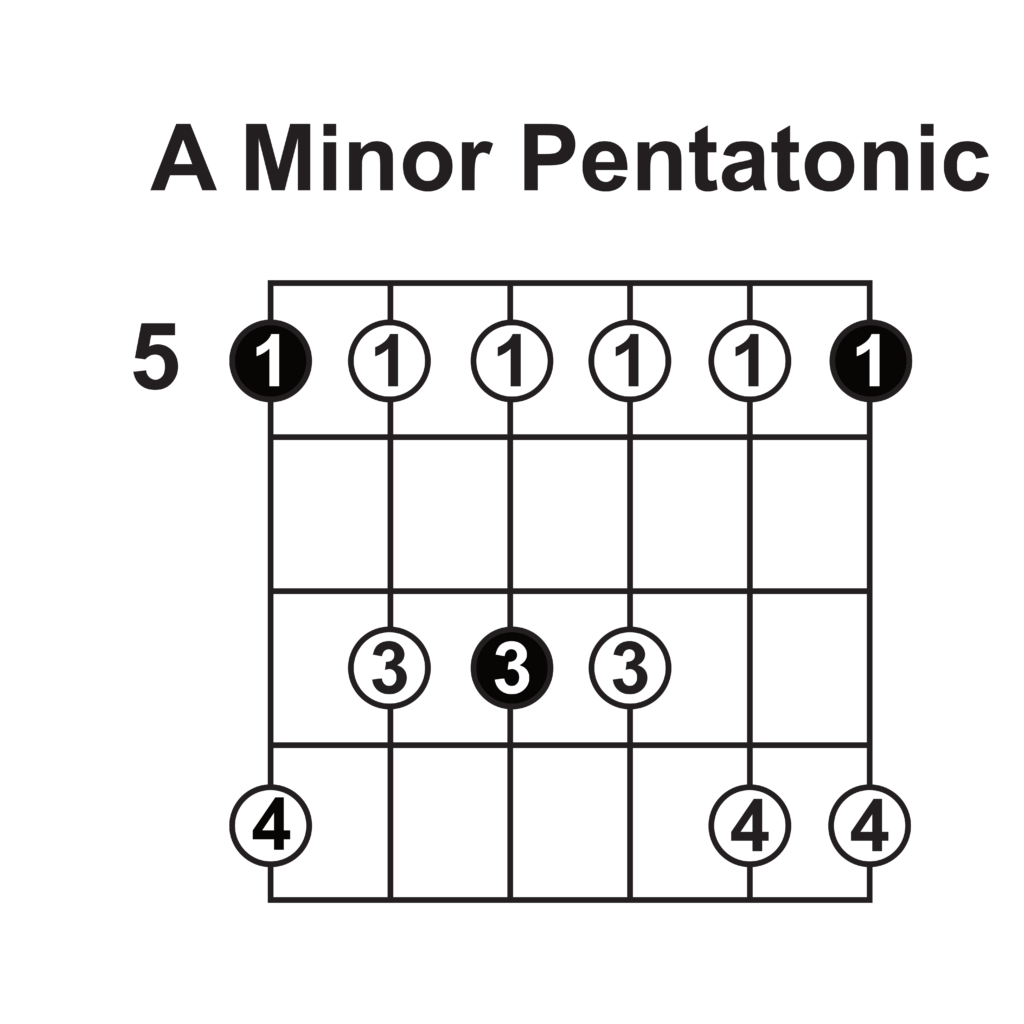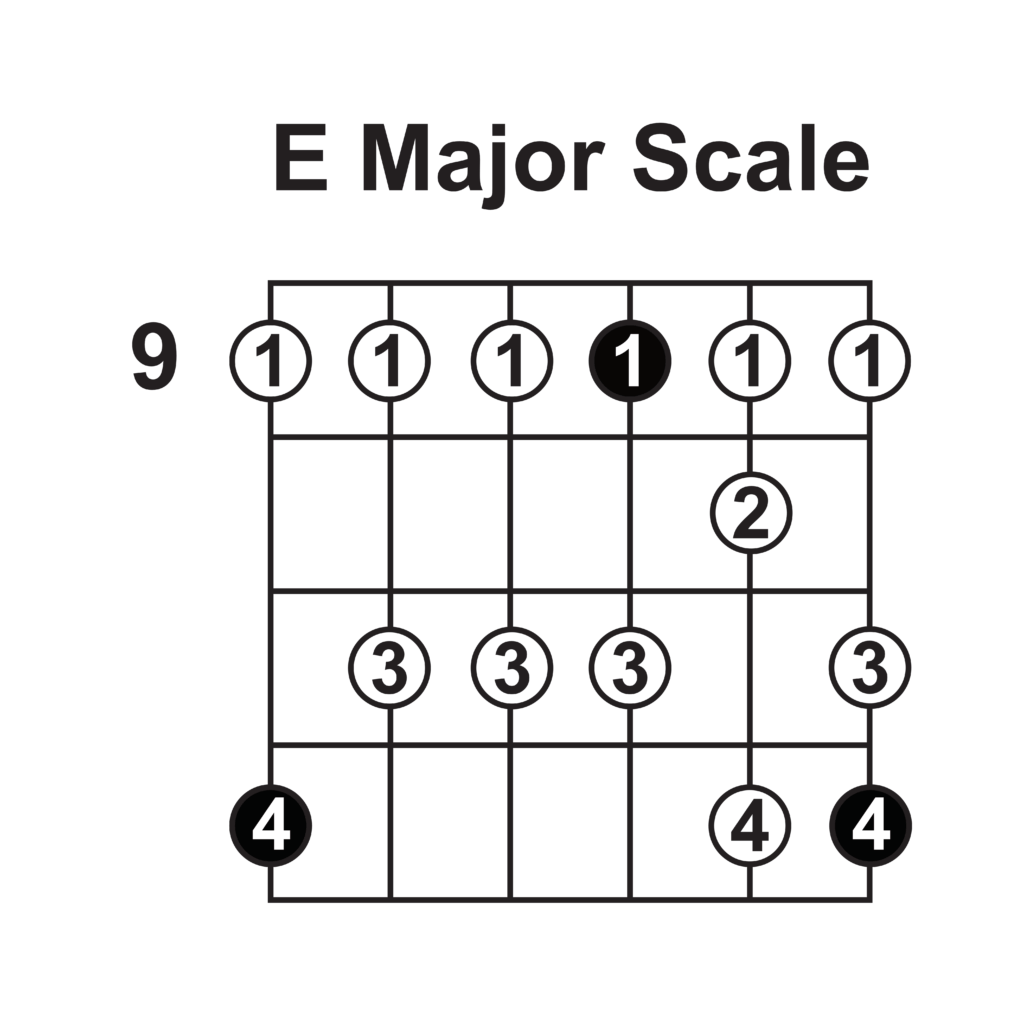
There’s nothing quite like listening to one of your heroes perform a jaw-dropping guitar solo. The guitar can be such a uniquely emotive instrument in the hands of a great player. Famous players like Eric Clapton, Jimi Hendrix, John Mayer, Jimmy Page, Slash, Eddie Van Halen, Stevie Ray Vaughan, and B.B. King are all notorious improvisers. Every well-known guitarist has their own specialized approach and methodology to playing solos, but in almost every case, improvising is the cornerstone.
What Is Improvising?
You might be wondering, what exactly does “improvising” mean? Improvisation is a term used by musicians of all skill levels to describe “making it up on the spot”. Whether you play jazz guitar, blues guitar, rock guitar, country guitar, pop guitar, or any other genre of music, improvisation is an essential skill when it comes to unlocking your creativity on the fretboard.
It’s All About Your Ears
Before getting into the meat of this guitar lesson, it’s key to note the importance of developing your ear. The amount of music theory knowledge you’ll need to improvise a guitar solo is fairly minimal, but having a good ear – being able to listen to and absorb the musical context – is essential to fully understanding and employing the skills you’re about to learn.
Getting Started
So what does it take to start making up guitar solos on the fly? Well, the wonderful thing about improvising is that it’s not some magical talent or superpower that you’re born with. By taking a step-by-step approach, anyone can learn how to improvise guitar solos. Let’s get started with this beginner lesson from Andrew Clarke.
Beginner Improvisation Guitar Lesson
In this video, Andrew takes you on a different path to learning guitar improvisation than you’ll typically find in other online lessons. Instead of focusing on the blues, this method is rooted in contemporary pop and rock chord progressions. The great thing about this system is that you’ll be able to take these newly developed skills into any genre of music and immediately apply them. In contrast, learning to improvise with the blues is going to chain you to that genre specifically.
You’ll want to at least have the basics of guitar playing down before jumping into improvising guitar solos. If you need somewhere to get started we have a helpful collection of free beginner guitar courses for you right here: The Guitarist’s Toolbox.
This lesson uses John Mayer’s “Slow Dancing In A Burning Room” to help you apply each step to relevant music. This not only makes these exercises more fun, but it also helps the concepts stick better in your mind.
The very first step to improvising guitar solos is learning a scale shape. As soon as the word “scale” gets mentioned, many new guitar players go running for the hills. And with all the boring scale exercises out there, it’s no wonder. However, scales are the foundation of all music and when we look at them through the right lens, they can be much less intimidating.
The scale shape you will use is a simple 7-note major scale. This tiny shape contains each individual note from the key of E major, which is the key we will be playing in for the entirety of this lesson. (Click here for a helpful crash course on music theory and the keys of music)

In this diagram you’ll see the number on the far left indicates which fret the shape starts at. The circled numbers dictate which fingers to use to play the shape. The black circles indicate the root notes of this scale. Since we’re in the key of E major, that means the black notes are E notes.
Take ten minutes (or a couple of days if needed) to get this shape under your fingers. Memorizing a simple guitar scale like this is something that will help you in every aspect of your playing as a beginner guitarist. Once you have it completely committed to memory, you’ll be able to move onto the next step.
Note: You’ll need to be able to play this scale shape both forward and backward.
To accompany this lesson, you’ll be using a jam track that follows the exact chord progression in John Mayer’s “Slow Dancing In A Burning Room”. Before you do any playing, listen through the jam track a few times and pay attention to where the chords change.
Step 1: Applying The Scale
Once you’ve listened to the track once you’ll be ready to play the scale shape along to the song. Go up and down the scale slowly as the backing track plays. Do this over and over and if you can, do it with your eyes closed. This is going to help you to better internalize what is happening musically and begin to develop your ear.
Step 2: Playing The Root Notes
Next, we’ll be getting a little more musical by playing the root note of each chord as they change. The chord progression of this jam track is C# minor, A major, then E major. These chords are all part of the key of E major, which is the exact name of the scale you’ve been learning.
All you’ll do is play the C# note (9th fret on the high E string) during the C# minor chord, the A note (10th fret on the B string) during the A major chord, and the E note (9th fret on the G string) during the E major chord. The changes are slow, so this shouldn’t be too challenging.
Step 3: Your First Improv
Once you’ve spent some time playing through the jam track and hitting each root note, it’s time to get into the more exciting stuff. We’ll be adding a random note from the scale shape in between each root note. So you’ll be hitting the root note on the change, then playing one other random note from our E major scale during the space between chord changes.
And just like that, you’re improvising! It might not seem particularly impressive, but what you just did is the first step to unlocking your creativity on the guitar.
Step 4: Freedom!
For the final step of this guitar lesson, you’re going to forget the root notes and just play any of the notes from the scale in any order. Now is where using your ear is important – listen to how each different note sounds over the individual chords in the jam track. Some will sound better than others, but all of them will “work”.
You’ll find that partway through this play-along track there’s a change in the chord progression. The chords played in this B section are B major, C# minor, and A major. Try going back and playing the root notes from in the E major scale shape (the B note is on the 12th fret of the B string) over this new section. Then once you’re comfortable you can go ahead and apply Step 4 of this lesson to the new chords.
This is only the beginning of your journey into making up your own guitar solos on the spot, but you’ve taken the first step and can now officially improvise!
For a little inspiration, watch John Mayer’s live performance of “Slow Dancing In A Burning Room”. He improvises two different solos in this video over the exact same chord progression as the jam track you’ve been using. You can even try playing along to the song yourself!
Beginner Guitar Solo Techniques
This lead guitar lesson from Darrell Braun is a great place to start learning how to play guitar solos with a focus on the blues. Since we already have the basics down from the first lesson, we’re going to focus on one section of this video – from 3:36 until the end – which is about different guitar techniques you can use to spice up your improvisation.
Darrell is using an A Minor Pentatonic Scale in this video. It’s different from the scale you’ve been using but due to its boxy shape, it’s fairly easy to learn.
The A Minor Pentatonic Scale Shape

Guitar Solo Technique #1: Repeat Notes
If you find yourself stuck in a rut, then starting off with something simple like repeating notes is a great way to stop yourself from just playing up and down the scale. Try combining the repetition of notes with the concepts you’ve already learned in the previous improvisation lesson.
Guitar Solo Technique #2: Vary The Tempo
WHEN you play is just as important as WHAT you play. Tempo and rhythm play just as important a role as the notes you play when performing a guitar solo. Try changing the speed of your transitions between notes. Make sure you’re still playing rhythmically. This means changing between quarter notes, eighth notes, sixteenth notes, and other basic rhythmic divisions.
Guitar Solo Technique #3: Change Directions
This is why it was stressed in the first lesson to be able to play your scale shape both forwards and backwards. Changing directions as you play a scale will stop your solos from sounding too robotic. Try choosing different points in the scale to change direction so your solos don’t get too repetitive.
Guitar Solo Technique #4: Skip Strings
Skipping strings can be a bit of a dexterity challenge so take this one slow. Play a combination of notes near one another followed by another combination of notes from a different part of the scale. It will take some concerted practice to get this technique to sound musical so don’t be discouraged if it doesn’t sound amazing right off the bat.
Guitar Solo Technique #5: Articulation
Here’s where we get into the more intermediate and advanced parts of playing guitar solos. Articulation refers to several different techniques including sliding, bending, double-stops, and vibrato.
If you feel like you’ve mastered the first improvisation lesson as well as the first few techniques from the second lesson, then you can start dabbling in these intermediate techniques. Start off with sliding and if you’re ready to get fancy you can try some bending as well.
When you’re ready to take your lead guitar playing a step further, we have a great lesson on vibrato by Ayla-Tesler Mabe. Vibrato is an intermediate technique that will help you to develop your own unique voice on the guitar.
Tying The Major Scale & The Minor Pentatonic Together
Now it’s time for a little magic! One of the lovely things about scales is that many of them tie right into one another. In this case, our small 7-note major scale shape sits right inside our minor pentatonic shape. The only thing you need to do to make this happen is to move the shapes into the same key.
So if you place the minor pentatonic shape on the 9th fret instead of the 5th fret, you are immediately playing in the key of E major. Just add these new “allowed” notes to your existing scale and BOOM! You’ve got a bunch of other places you can go while playing along to the jam track from the first lesson.
The same can be done the other way around. Move that small major scale shape down to the 5th fret and line it up with the A minor pentatonic scale. Now you can apply all the same principles from the first lessons to a new key.
The E Major/Pentatonic Combined Scale Shape

Next Steps
As a brand new improviser of guitar solos, you have an endless world of musical discovery ahead of you. So what’s next?
Something you may have noticed is that you’re only able to play in a couple of keys. That’s to be expected for new players, but it won’t be long before you’ll want to explore all the remaining keys of music. Here’s a lesson that will give you the skills to find the key of any popular song.
Before jumping right into this video, you’ll need a basic understanding of music theory. Click here to watch 8 Steps To Understand Music Theory.
If your guitar solos are in need of some spice, we have an intermediate lesson on some more sophisticated lead guitar techniques that will further elevate your skills. In this video, Andrew Clarke teaches you raking, muted strums, pops, slurs, single-string slides, and single-note thickening.
Finally, check out Paul Davids’ video featuring some popular guitar YouTubers improvising over the same track. You can see players like Chris Buck, Pete Thorn, Tim Pierce, and Tyler Larson from Music Is Win all take wildly different approaches even though the musical context is the same.
Thanks for reading!
Andrew Clarke is a guitarist, educator, and content creator from Vancouver, Canada. He's best known for his YouTube channel, where he creates easy-to-follow guitar lessons and informative guitar gear videos. Andrew also manages The Riff.

By signing up you’ll also receive our ongoing free lessons and special offers. Don’t worry, we value your privacy and you can unsubscribe at any time.
We use cookies for traffic data and advertising. Cookie Policy »